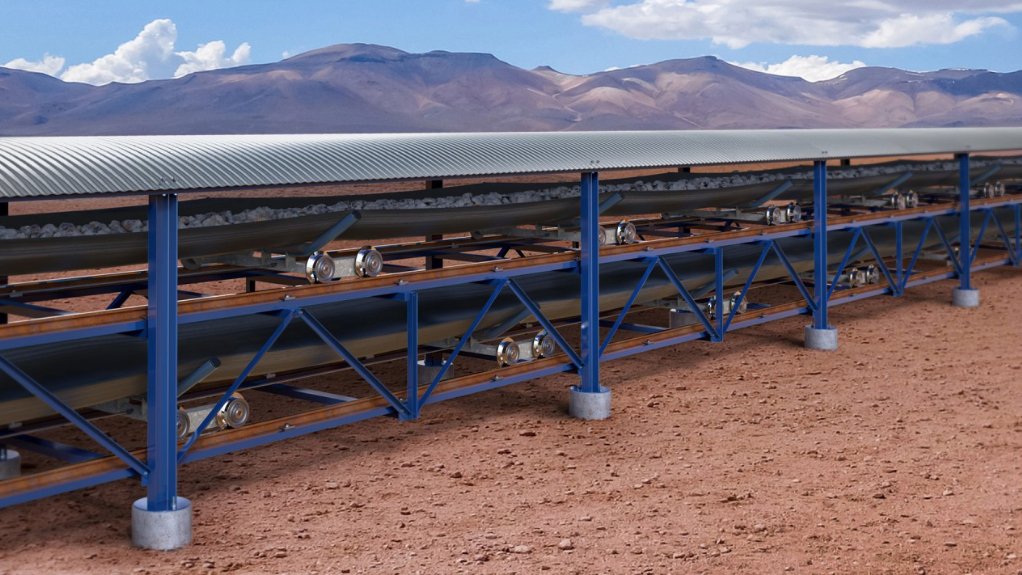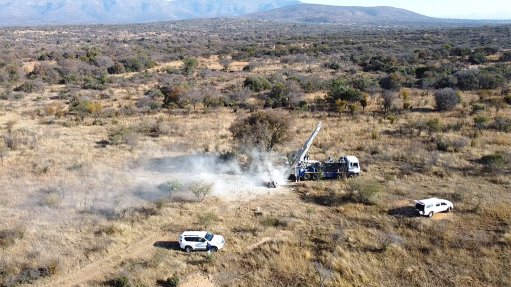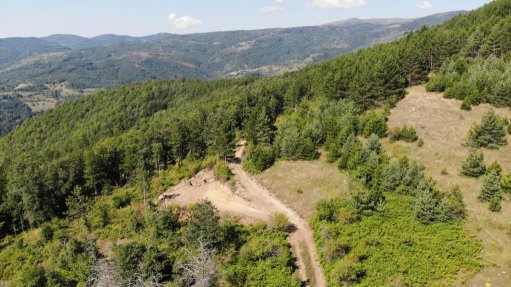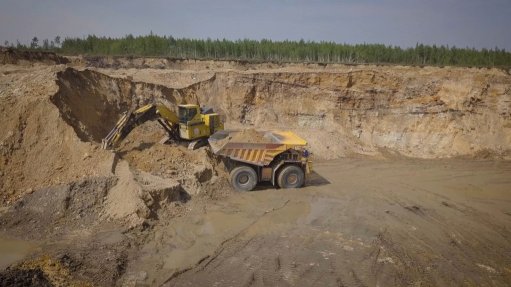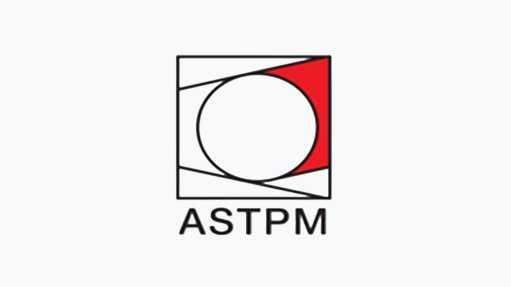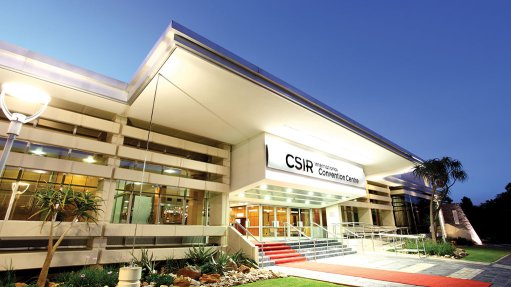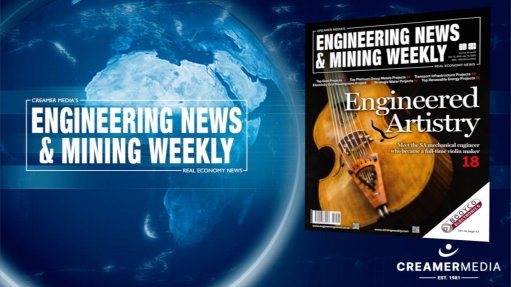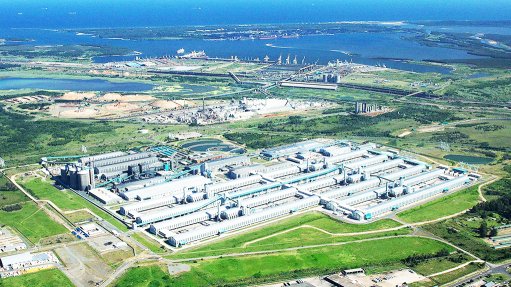Africa is early adopter of Rail-Running Conveyors from FLS
This article has been supplied.
An African mine will be among the first adopters of the innovative Rail-Running Conveyor (RRC) technology, commercialised by full flowsheet provider FLS in collaboration with the University of Newcastle, Australia
“Designed to dramatically reduce energy consumption, improve safety and cut capital and operating expenditure, Rail-Running Conveyors are a gamechanger for mines which must rely on extended conveying distances to move material,” says Martin Lurie, FLS Global Product Line Manager for Rail-Running Conveyors (RRC). Any mine that carries substantial tonnages over more than 500 to 1,000 m can achieve far higher efficiencies using this technology.
“The first full-scale operational system will be commissioned in southern Africa in mid-2025,” he says. “It is designed to carry 5,000mtph of copper ore over a 3,25 km run, and is expected to save approximately $1 million each year in power costs when compared to a conventional trough conveyor.”
A second system, destined for the same mining customer at a mine in the Americas, has also been under construction and will carry around 13,000 mtph, also delivering significant power savings and safety improvements. Lurie describes the customer as visionary in looking ahead to the technologies that will empower the future of mining, and also as an indispensable partner in bringing the RRC to full-scale maturity.
Lurie highlights that the energy losses incurred by an RRC is anything between one-fifth to one-tenth of those experienced by traditional trough and pipe conveyor systems respectively. “The friction losses on a conventional long distance conveyor,” he points out, “largely determine the power capacity that must be installed, the size of the structures required and the downtime incurred to maintain and replace pulleys and drives. Reducing these energy losses therefore has a positive knock-on effect on the costs of a range of other aspects.”
“Customers achieve savings on the scope of the conveyor equipment itself, the cut-and-fill civils requirements, the volumes of concrete used, the strength of the belt and the number of drive stations necessary,” he says. Due to the lower tension acting on the conveyor belt, a lower rating of belt is possible. Faster speeds and a deeper trough also mean that a narrower belt may suffice for the same throughput. Importantly, the rating of the drives does not need to be as high.
“Where a 6 MW drive may be specified for a conventional conveyor, for instance, this technology may allow a 2 MW drive to be installed,” he says. “This then has further positive impacts on the ratings required for motors, transformers, E-houses and power supply.”
The head and the tail of an RRC remain the same as in traditional systems, he explains, with the rail-running section making up the bulk of the distance. The basic mode of transport is steel-wheel-on-steel-rail instead of a belt running over idlers. This fundamental difference is what cuts energy consumption so drastically.
The system uses small carriages to carry the belt and these are automatically exchanged at maintenance houses when required. This removes the safety risks associated with personnel changing out idlers out along the length of the conveyor. Having fewer transfer points also has a safety benefit as these can be sources of injury during maintenance as well as health threats from dust exposure.
“The RRC system has been a decade in development, drawing heavily on two established technologies,” he says. “These are underground mining rail technology on the one hand and overland conveyor systems on the other.”
Lurie explains that the University of Newcastle’s Dr. Craig Wheeler and colleagues obtained patents on the family of designs and FLS has an exclusive license with the University to exploit similar technology that FLS had also been developing.
The FLS/University of Newcastle team believe that the RRC innovation is a paradigm shift for conveyor systems - not only in terms of energy saving and carbon footprint reduction but also in terms of the distance that a conveyor can travel and the challenging terrain through which it can operate. Thanks largely to the way the belt sits stationary in the cradle, an RRC can negotiate tighter curves and can also climb steeper angles without the material on the belt rolling back and spilling.
“Our straightforward calculations of the potential impact on existing mining operations shows unprecedented savings resulting from this system,” he says. “One study, for instance, investigated the benefits for a customer who has to move material over 15 km between the pit and the plant. Where seven conveyors were currently required we could do the same job with three – while consuming only a quarter of the energy.”
Lurie adds that the customer’s comparisons to other high efficiency bulk haulage modes available to the mining industry reveal unmatched efficiency ranging from pit to plant, across the plant and onwards for the next 50 or 100 km, if needed.
FLSmidth News
Article Enquiry
Email Article
Save Article
Feedback
To advertise email advertising@creamermedia.co.za or click here
Announcements
What's On
Subscribe to improve your user experience...
Option 1 (equivalent of R125 a month):
Receive a weekly copy of Creamer Media's Engineering News & Mining Weekly magazine
(print copy for those in South Africa and e-magazine for those outside of South Africa)
Receive daily email newsletters
Access to full search results
Access archive of magazine back copies
Access to Projects in Progress
Access to ONE Research Report of your choice in PDF format
Option 2 (equivalent of R375 a month):
All benefits from Option 1
PLUS
Access to Creamer Media's Research Channel Africa for ALL Research Reports, in PDF format, on various industrial and mining sectors
including Electricity; Water; Energy Transition; Hydrogen; Roads, Rail and Ports; Coal; Gold; Platinum; Battery Metals; etc.
Already a subscriber?
Forgotten your password?
Receive weekly copy of Creamer Media's Engineering News & Mining Weekly magazine (print copy for those in South Africa and e-magazine for those outside of South Africa)
➕
Recieve daily email newsletters
➕
Access to full search results
➕
Access archive of magazine back copies
➕
Access to Projects in Progress
➕
Access to ONE Research Report of your choice in PDF format
RESEARCH CHANNEL AFRICA
R4500 (equivalent of R375 a month)
SUBSCRIBEAll benefits from Option 1
➕
Access to Creamer Media's Research Channel Africa for ALL Research Reports on various industrial and mining sectors, in PDF format, including on:
Electricity
➕
Water
➕
Energy Transition
➕
Hydrogen
➕
Roads, Rail and Ports
➕
Coal
➕
Gold
➕
Platinum
➕
Battery Metals
➕
etc.
Receive all benefits from Option 1 or Option 2 delivered to numerous people at your company
➕
Multiple User names and Passwords for simultaneous log-ins
➕
Intranet integration access to all in your organisation



